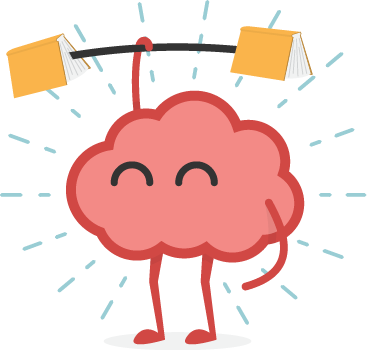Even if you’ve never wrangled with school teachers and administrators over a child’s individualized education plan (IEP), as the parent of a child with dyslexia you probably know full well that educating a child with a learning difference is challenging. Most of the time, the focus of well-meaning professionals is to help you “fix what’s wrong” with your child.
And certainly, students with L.D. can greatly improve their reading and writing skills with interventions that are customized to their weaknesses. It’s important, however, to give equal (or primary!) attention to all the upsides of dyslexia — the “dyslexia strengths”. The very things that stump your child in one area make him/her absolute masters of other domains.
Students with dyslexia often have struggles with self-esteem, simply because the type of school work that seems to come so easy for other students can be an absolute stumbling-block for them. That’s why, for homeschooling parents, it’s especially important to remind your child often of all the positive things about dyslexia.
When you need a “cheat sheet” for all those great traits, save, pin, or print out the following list of strengths of students with dyslexia, along with some tips for how to teach to each of those strengths in your homeschool.
Head HERE to view Part 2 of this blog post and learn about five additional strengths.
1) High Levels of Creativity
Have you ever noticed how many artists, actors, and musicians claim to have dyslexia? People like Roald Dahl, Steven Spielberg, Tom Cruise, John Lennon, and Walt Disney are all reported to have had significant learning difficulties in school. Yet, so much of our popular culture has been influenced by what they have created. Not only because of how they are wired, but because they constantly have to find unique ways to compensate for their difficulties, people with dyslexia tend to have expansive creativity.
Teaching to This Strength in Your Homeschool:
We’ve all been asked in our math courses to “show our work.” Keep in mind that for children with dyslexia, this may not be so cut and dried. If your student comes up with the correct answer to a question but has a difficult time explaining how he or she did that, don’t force the issue. Simply chalk it up to your unique learner’s mad creative skills!
2) Impressive Comprehension Skills
Sure, your daughter is busy playing blocks, and even humming slightly to herself as you read aloud from today’s science chapter, but that doesn’t always mean she isn’t taking in most or everything that you are saying. Many students with dyslexia seem to have an incredible ability to take in information — even while multitasking. The very text that might have given your daughter untold frustration to read, may stick with her forever if she hears it in audio format.
Teaching to This Strength in Your Homeschool:
Audiobooks are a student with LD’s best friend. Not only does following along with an audiobook improve sight reading skills, but gives your student a huge edge on reading comprehension – – understanding what he or she needs to know from a text. Many common textbooks as well as many childrens and teens fiction works are available in audio format.
3) Strong Reasoning Skills
While too much focus on details can bog down your child with dyslexia, he/she has an incredible ability to see the big picture of situations. This makes them an invaluable asset to teams that need a problem-solver, such as rocket club or Lego League. It also makes them highly adept at games such as chess or games where you win by spotting patterns.
Teaching to This Strength in Your Homeschool:
If your student with learning differences has had a tough day, it’s time to remind them just how smart they are! Dig into the closet and pull out that Clue, Mastermind, or Apples to Apples game you haven’t played in a while and challenge your child to a game. Seeing how handily they can beat Mom or Dad thanks to their built-in deduction strengths is sure to give them a quick boost of confidence.
4) Unique Visual Processing
I once happened to overhear my son singing the ABC Song backwards instead of forwards (from Z to A). I asked him where he had learned this version, and he told me he hadn’t; that he had just made it up. “But,” I persisted, “how were you able to sing it unless you memorized it?” He explained to me that he could just as easily “see” the string of alphabet letters backwards as forwards. As amazing as this sounds, many students with dyslexia report being able to visualize almost anything in their minds from a three-dimensional perspective, giving them incredible visual processing abilities.
Teaching to This Strength in Your Homeschool:
As any parent or teacher of a child with dyslexia knows, phonics can be his/her biggest nightmare. To compensate, though, it can be helpful to use colorful flashcards with creative fonts to help your student learn the most common words by sight. Seeing words displayed in this way can set many of the words to memory for your student and may mean that he or she can more easily retrieve the word next time they come across in in text.
5) Lively Imagination
Is your child often just as happy to play by herself and create her own games, activities, and diversions? While you may occasionally find your son’s constant need to be play-acting annoying, this trait is an incredible asset. Einstein once said that “imagination is more important than knowledge.” This rings true if we realize that all problem-solving skills we will ever have depend on being able to think about a situation in imaginative and different ways.
Teaching to This Strength in Your Homeschool:
Encouraging your child in pretend play might be even more important than you think. When a child engages in make-believe, she is using symbols: making one thing (such as a brush) stand for something else (such as a microphone). Understanding symbolic representation is extremely important when learning to read, where children are introduced to the idea that a letter represents a specific sound. To enhance this skill in your student, bring pretend play into your lessons by having her act out things that she is learning.
Now read PART TWO of this post, where we outline five more wonderful learning strengths of students with dyslexia.







I have grandson (age 7) who can read quite well, is good at arithmetic, but has issues with spelling and occasionally, mirror writing. I find your information most helpful. There are things I would never have understood but for your website. Thank you.
We’re thrilled to hear that we’re a valuable resource for you, Mary! Thanks so much for stopping by! 🙂
At what age are they able to diagnose dyslexia? I have an 8 year old grandson that is having difficulties with reading( understatement of the year)teachers say he has a 23% chance of passing the third grade! He gets so frustrated he ends up crying!
We’re so sorry to read about the struggles your grandson is having, Debbie. Often, dyslexia is diagnosed by an educational psychologist. If your grandson is still in school, you could try requesting some tests at the school. You could always reach out to his pediatrician, as they may be able to point you in the right direction.
Here is a link that might be helpful for you as well, with some tips for teaching reading to students with dyslexia: https://www.time4learning.com/homeschooling/special-needs/dyslexia/teaching-reading.html
Good luck!
I was born a left handed mirror writer. My 2nd grade teacher had written her Masters on dyslexia.Everything – all the positive things listed above are true! I even won contests for my essays ! I couldn’t agree more about the positive powers of dyslexia. I am now 65yrs old and it has been a great journey
Thanks so much for taking the time to share, Kathryn! 🙂
I feel that when people are dyslexia a lot of times it’s inherited and they really are smart when you talk to them and they understand everything but when it comes to writing down an address or handling your checkbook or reading it’s like it is it’s backwards and you feel inferior and so therefore you do something else so you don’t have to have paperwork involved
Thanks so much for stopping by and reading, Margaret, and for taking the time to comment! 🙂